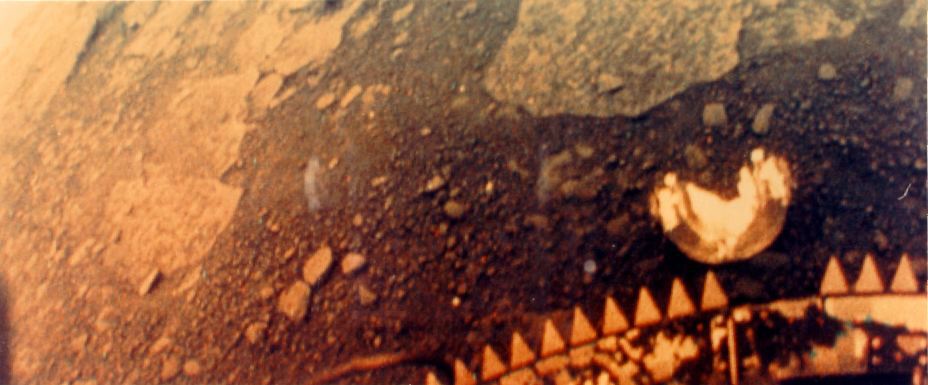I think the video used the words "form" (make-up) our galaxy, not "are forming," although since several have mentioned this, that syntax issue is definitely worth examining.
Yes the color a star appears depends on if you are observing from Earth, or from Space. Even the color of our own Sun is distorted due to our atmosphere and it should be more towards a whitish color (tinge of yellow). That being said, a LOT of factors go into how we interpret the color of a star--human vision being a big one (rods are not very sensitive to red), atmospheric interactions, atmospheric glow, the instrumentation involved (especially if filters or ccds are involved), the fact stars are point sources (again a factor of how our eyes work, along with the brain's interpretation--similar in concept to combining red, green, and blue light to get what is interpreted as white light). Looking at peak wavelengths and blackbody spectra, the star colors should be more extreme than they appear to us. What we see in a telescope is highly influenced by many factors, including as I stated our own eyes--they can't always be trusted 100%

Yes we are at the center of the observable Universe. And a hypothetical being on the other side of the universe would likewise see itself as the center of its observable universe. I think the key point is that we are all so small, on our own little "pale blue dot," and there's so much more than ourselves, our struggles, etc., although it's easy to forget sometimes.
How spherical an object is depends on several factors although given the dynamics, I agree that VY Canis Majoris would likely not be that spherical, and yes it would for multiple reasons be a bad idea to fly around it. I don't think the point of the video is that one should or could take a trip around that star or that it would be a very "round" trip (sorry for the pun). I think the point of the video is to give students and the general public a means/comparison to gain a perspective of size and scale on the Universe (hypothetical). I have a background in formal as well as informal education, from ages pre-school through adult, and especially when it comes to dealing with sizes that are hard to comprehend (either the really large or the really small), these types of metaphors and visuals can go SO far. One example people get a kick out of is the idea that space is closer to us than the distance from San Francisco to Las Angeles. Yes we can't drive to space, but IF we could, it would take less time than the drive between SF and LA (at the same constant speed of course)! I think what's important to consider is in what context will this video be used? If it's designed as an educational tool for say middle/high school students, yes you want them to learn accurate information; at the same time, I'm happy if they can get the basics down, I can guarantee that only in certain situations and with select student groups would the star's shape be a point worth focusing on. It could make for an interesting mathematics word-problem, or physics discussion. But I think if we get too caught up in details (however fascinating and important they might be), the bigger picture could get lost. That's just my take though--this is the timeless debate in science education--what to focus on, not focus on, to go knee deep on one topic or inch deep on many...it's a challenge and a balance.
VY Canis Majoris definitely does not really have a photosphere like our sun, and it's a pretty messy system having blown off much of its outer layers. In fact while it's the largest (volume/size wise) it's not the most massive having expelled much of its mass through stellar winds as a result of the increase in internal pressure. The problem I do see with comparing main-sequence and giant stars is where the size factor comes from--due to "bloating" from fusion processes beyond H-fusion (increasing volume), or due to mass. Many blue giants and supergiants would outweight red giants, but may take up less space depending on their mass and where they are in their life cycles. That said, again--if the point is to give students/the general public a perspective of size and our place in the universe, than that might not matter too much.
Overall I think the video could make a great educational tool and really puts size into perspective, and when teaching about size, distance and scale in relation to the universe, I would certainly utilize it.
